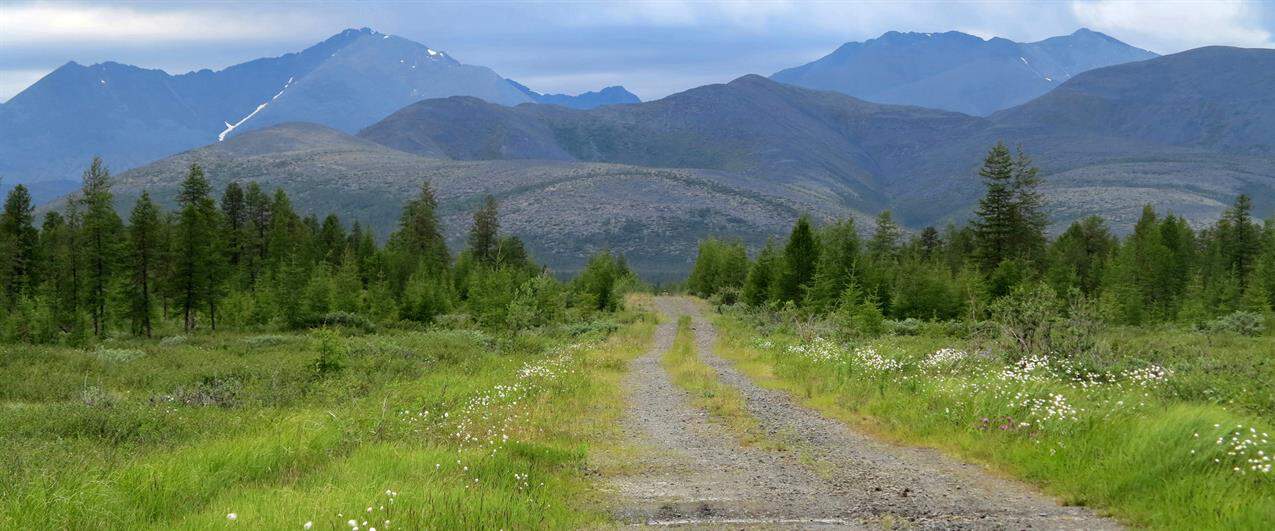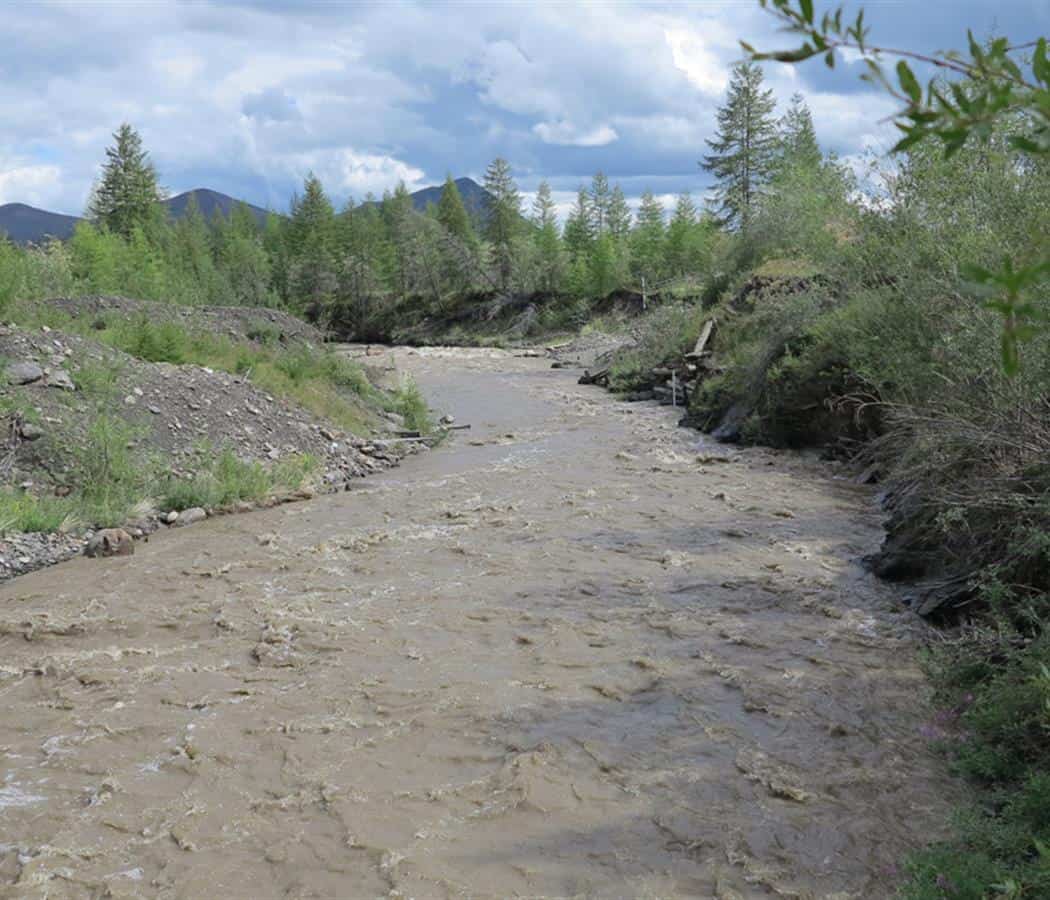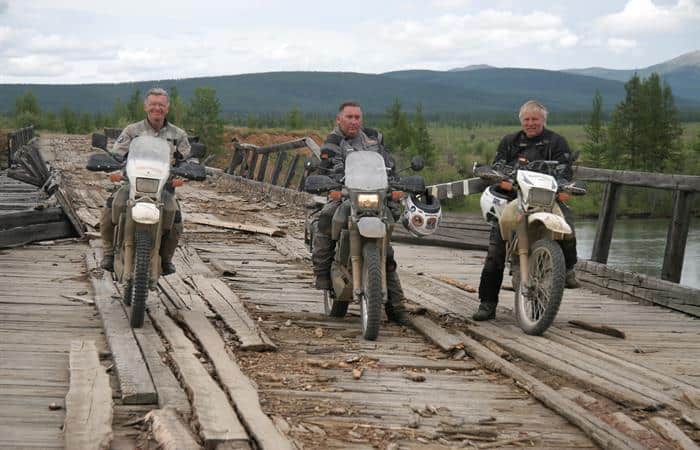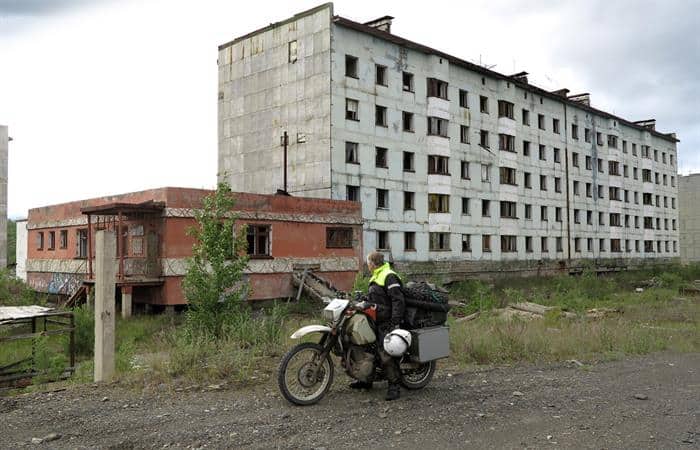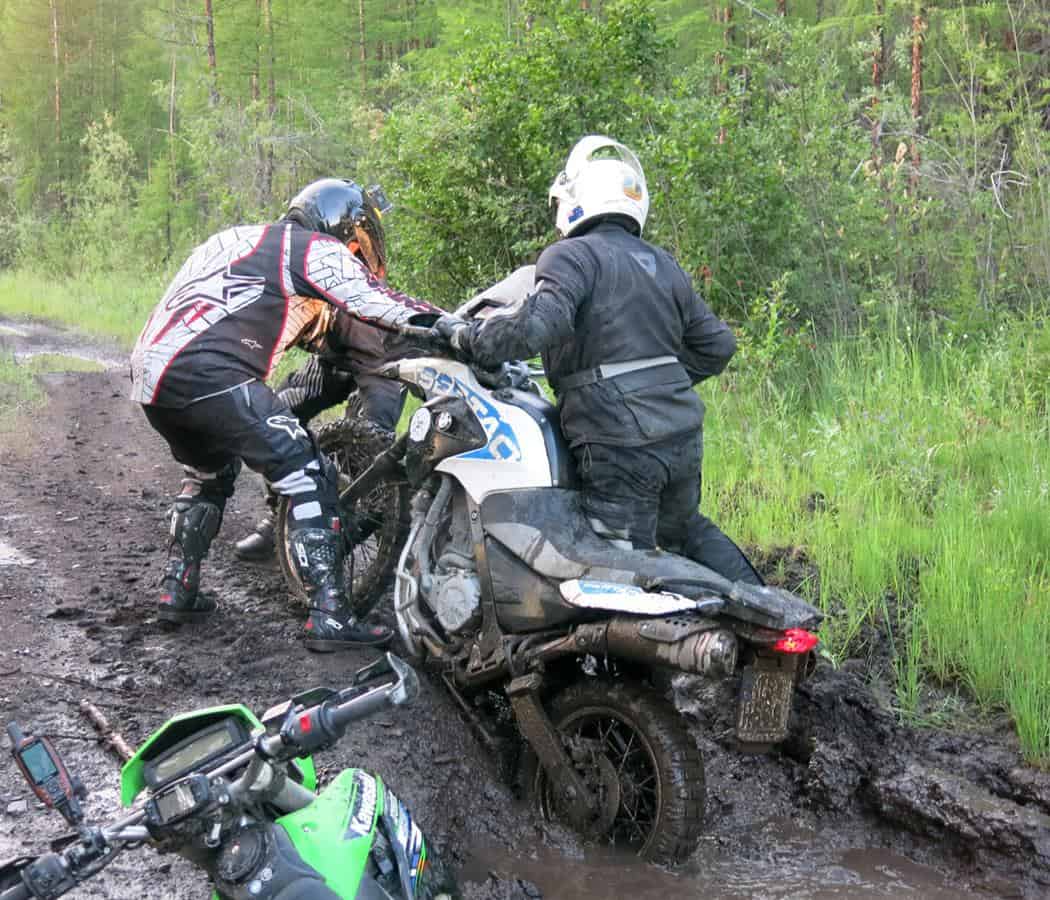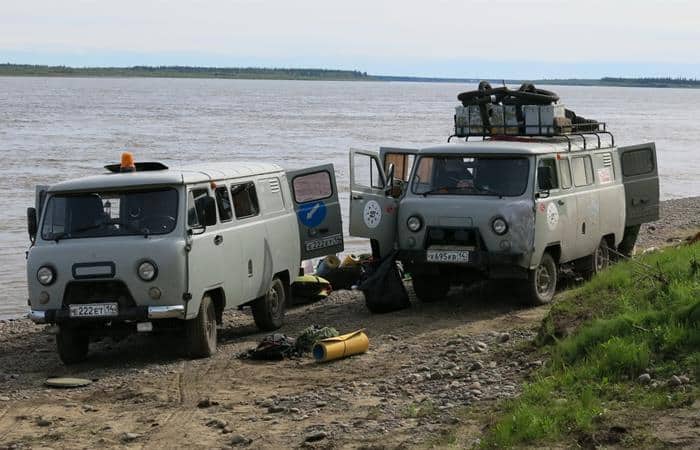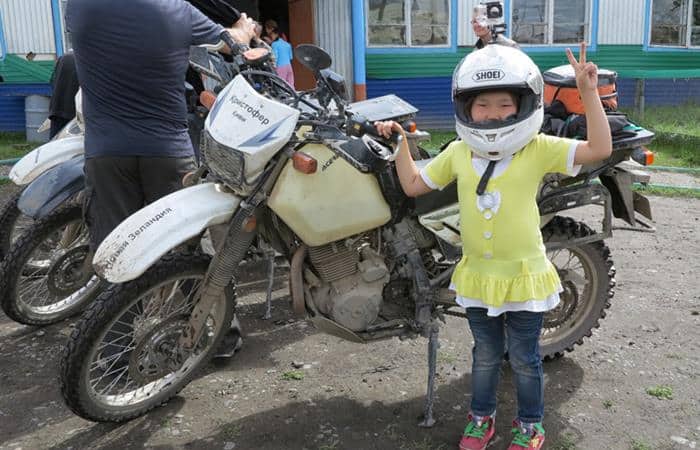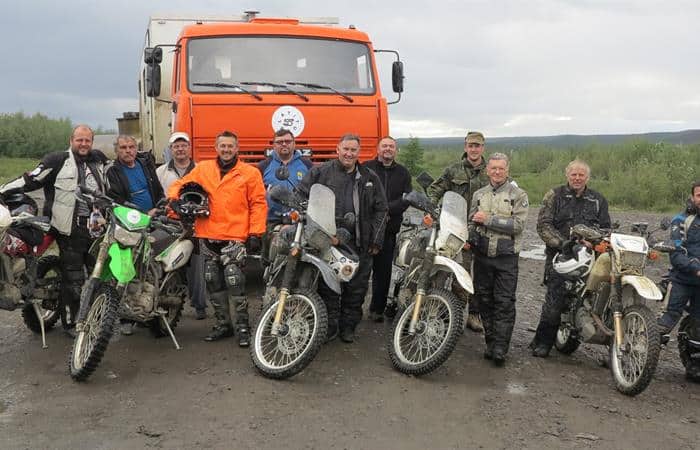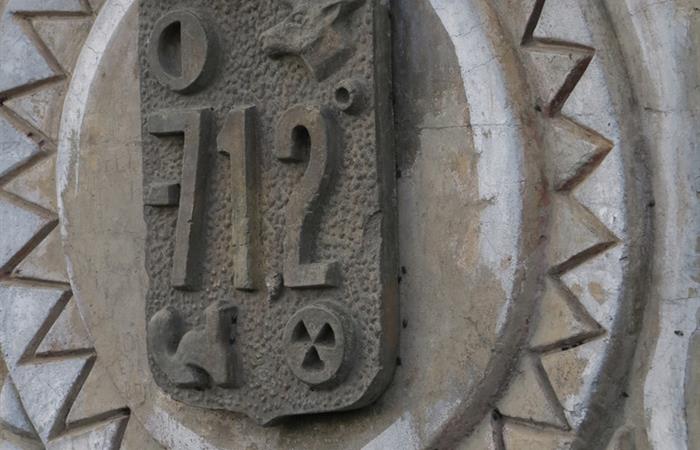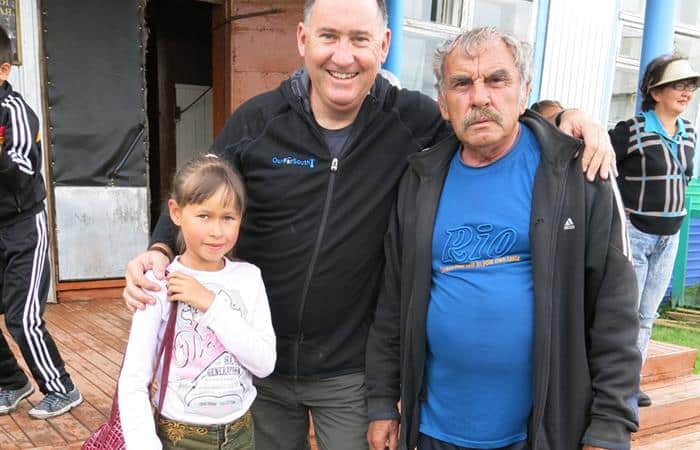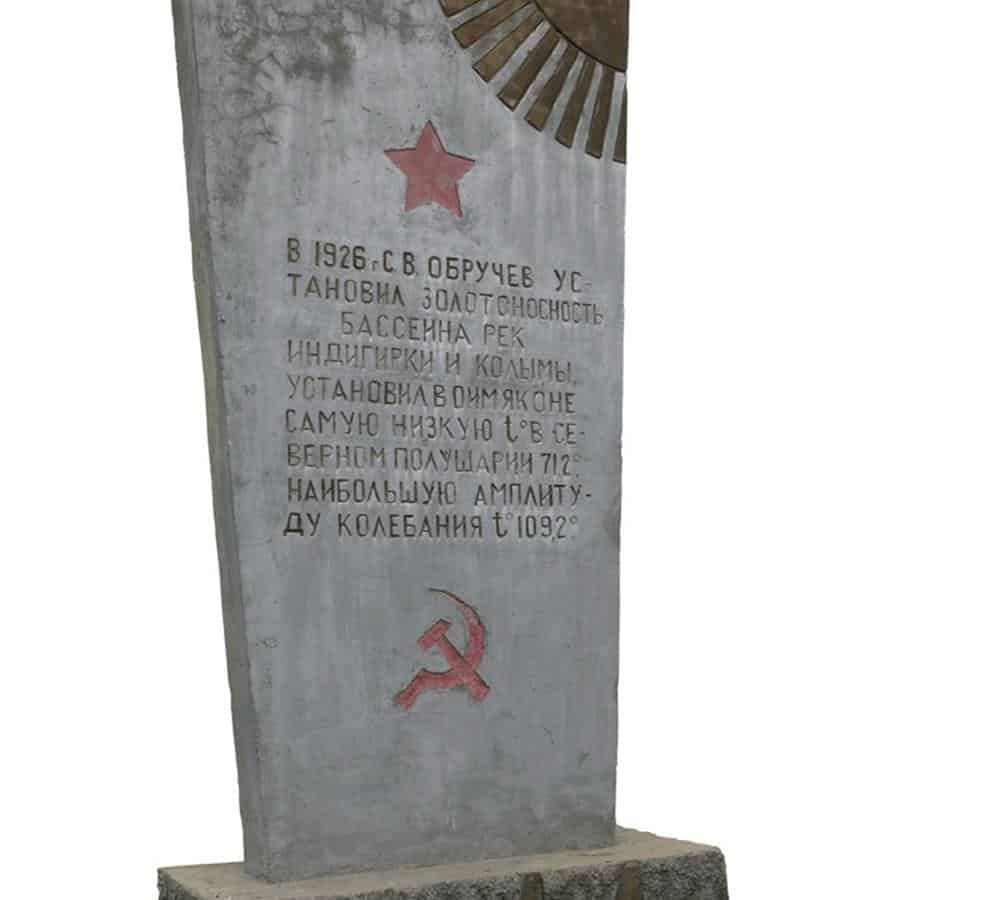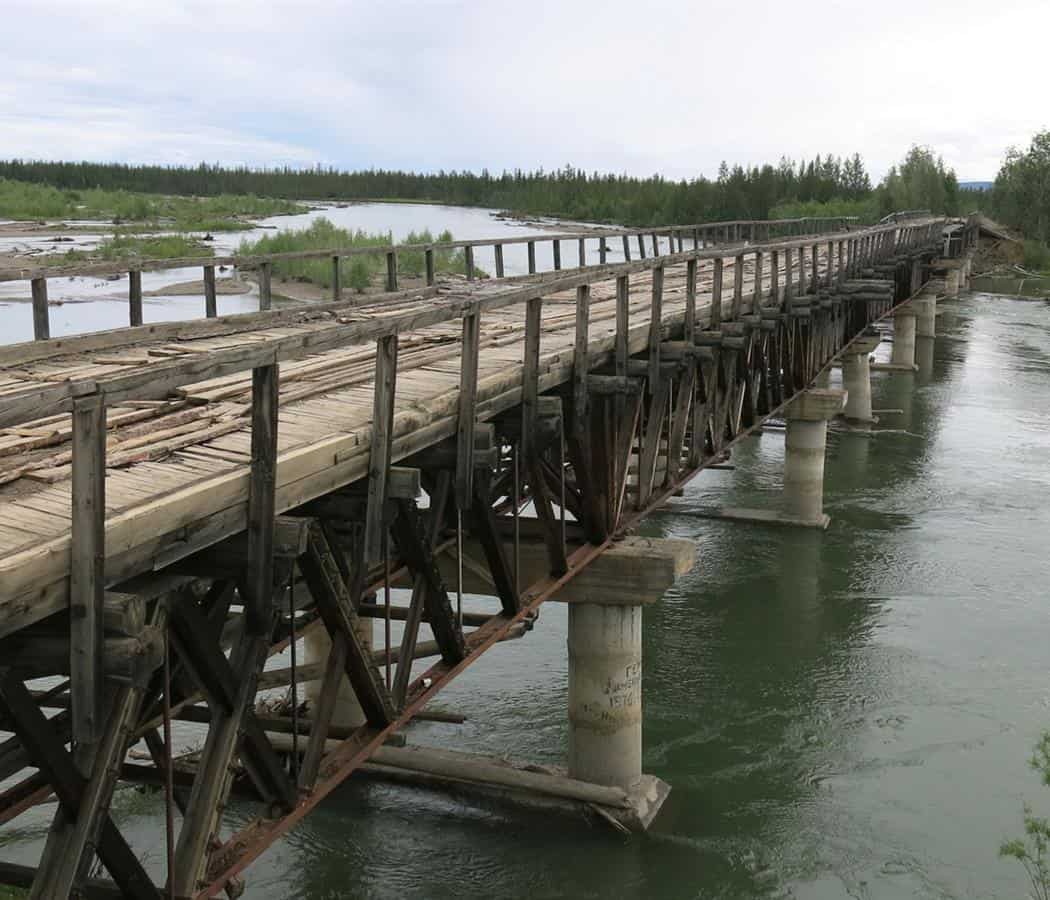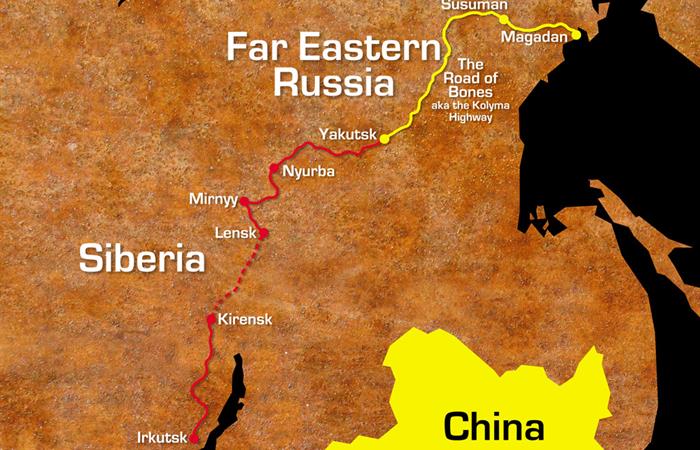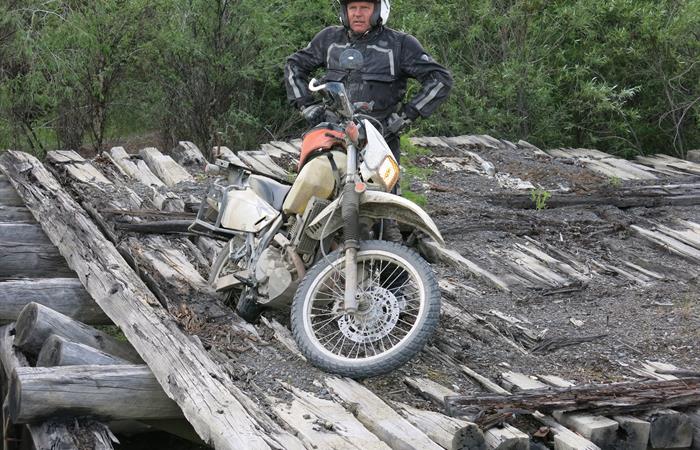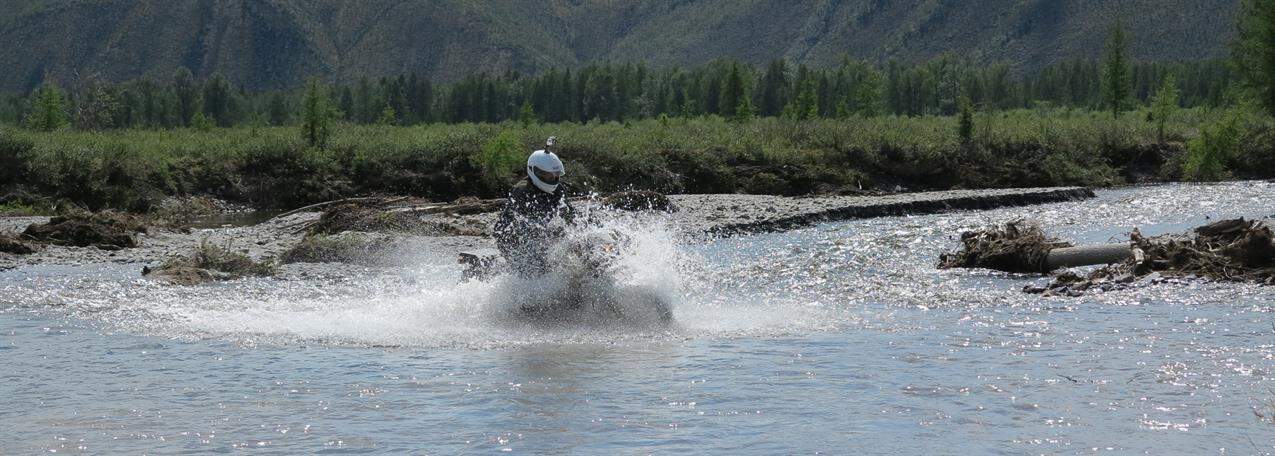Looking for an adventure? Somewhere remote, with bears in the wilderness, mosquitos as ferocious as the bears, zombie towns and a long disused road with a tragic past, broken bridges and river washouts. Then come to the Road of Bones, the real Road of Bones… Not the gravel road (fast becoming a gravel highway) from Yakutsk via Ust Nera to Magadan, but the summer road (‘Old Road’) completely abandoned with adventure scarred into every kilometre by the ravages of time and nature…
Both roads start in Yakutsk (Nizhny Bestyakh) on the Lena River and travel approximately 2000 kilometres to Magadan, through a vast wilderness, creating access to the region’s minerals, gold and other metals. A roading project of the Stalinist era, construction started in 1932 with the first labour camp (Gulag) and then subsequent Gulags were constructed along its route until 1953. The road has become a memorial for the labourers who were interred in its fabric as it was deemed “impractical” to dig graves in the permafrost.
In 2008 the road gained Federal status and the route that splits north via Ust-Nera has undergone considerable upgrade. The upgraded route bypasses Tomtor sitting some 420 kilometres eastward and beyond Tomtor the next 200 kilometres has been completely abandoned by the highway authorities. It’s this old route (the Old Road) that has the ingredients for adventure for motorcyclists and 4WD explorers.
Logistics and logistics
We had our Russian friends Konstantin (Kot) and Maxim (Max) in Moscow working with the Yakutia government for the necessary permissions and support vehicles. Kot and Max would need to get their bikes and our group camp equipment from Moscow to Magadan at the other end of Russia. The distance from Moscow to Magadan is 10,201 kilometres while the distance from Auckland (our home) to Magadan is 10,937 kilometres – we were effectively meeting our comrades halfway for this epic journey. Max and Kot would secure the support truck and van and all food supplies. Back in New Zealand we prepared six Suzuki DR650s for this sub artic encounter.
While we Kiwis were all ‘brand bunnies’ and normally rode exotic enduro and adventure motorcycles at home, an analysis of the conditions and the facilities along the way made it obvious to choose a machine that was very basic. A machine with minimum electronics and a good old fashioned carburettor. It was the Suzuki which boasted such minimalist technology but equally, a legendary reputation for reliability. Needless to say we ‘tricked’ these bikes up with a plethora of accessories, some even necessary when considering the conditions expected.
Getting our bikes and ourselves into Russia was quite the adventure in itself. We were shipping them to no one (we of course weren’t there, nor were we citizens), to a little port off Russia’s east coast. We would fly in later and uplift the bikes, join up with our Muscovite colleagues and start the journey. Even with Russians to help it was a long process with a large amount of form filling and document gathering.
In charge of shipping, my cunning plan was these bikes should be sent as ‘unaccompanied baggage’! We loaded our six Suzukis into a container in Auckland using delivery crates screwed to the floor and chocks of wood. I had checked the sailings, built in contingencies and then told all the guys that their bikes had to be ready three weeks earlier than necessary. So with nearly two months up my sleeve I was confident as I could be our bike would be waiting for us. Three months later we arrived at Vladivostok, completed our documentation and flew to Magadan – to find no bikes!
The problem was the port in Magadan was privately owned by a gold mining company and they were denying our ship a berth. It was claimed they were giving priority to vessels supplying a new mine they were building. Local businesses were affected too. We did what we could at Magadan customs, but rather than just watch our ship sitting in harbour we turned our attention to assembling the Russians’ bikes (now arrived from Moscow) and loading equipment into the one support van we had at this stage.
We had a situation. The trip had been planned, dates set and equipment gathered. We had the Yakutsk government involved with a support vehicle and their own adventurers coming from the other end (Yakutsk). Everything hinged on a window of two days to meet up at the start of the Old Road. Gone was our two month contingency. With no bikes yet landed we watched the Russians ride out of Magadan to meet the rest, with the realisation this all could be for nothing. Finally, two days later the ship was being unloaded. By 4pm we got the call and picked up our bikes. We loaded-up and by the following morning were gone.
The chase
We had quite a chase on our hands, the Russians were ahead three days and at least 750 kilometres north of us (but thankfully had slowed their progress). With all the scenarios of ‘if we did or didn’t get our bikes in time’ we had gear for every contingency now on our bikes, including off road tyres. So we were travelling heavy. There were some isolated fuel stops on the way but the last stretch to the rendezvous would find us arriving at the start of the old road needing gas from the support truck to go much further – or abandon. With sat-phone communication established the Russians could leave hidden gas for us but then we had the added complication that the rivers were swollen and the Old Road was, as it usually is, ‘protected’, or rather isolated, at each end by two substantial rivers. At this time it was far too high to get the bikes across so they had to go on the waiting truck.
The distance may not seem a lot but we had fully laden bikes, it was raining and it was getting cold as we gained altitude from Magadan. Punctures were a risk and an event that would slow us considerably. Some of the gravel road was fast and some was in very bad condition with ruts and pot holes so it was a ride of caution and longevity. We passed some smaller settlements, and until now I haven’t mentioned that since arriving in Magadan the overall impression of this part of Russia was of a harsh environment, of decayed and abandoned buildings. Magadan and outlying settlements were only established from 1930 onwards as the transit points for prison labour to the region. So the initial wooden buildings have been ravaged by the elements and their foundations wrenched by years of freeze and thaw. Everywhere the collapse of the Soviet era and the decline of gold mining and fishing in the region are reflected in completely abandoned towns and factories. As we rode past the towns of Orotukan, Atka, Yagodnoye and Sussaman, we wondered where did these people go and what happened here.
THE ROAD OF BONES explainer
Also known as the Kolyma Highway, as Chris explained, it was constructed between the years 1932 and 1953 at the cost of the lives of thousands – the exact number is unknown – of politcal prisoners encascerated in Stalin’s Gulag system. The highway was needed to access the gold mining that was undertaken in the area by yet more prisoners.
The route reached (western) adventure riders’ consciousness when traversed in 1995 by Austin Vince and his Mondo Enduro (round the world) team of riders. It was then brought to wider public recognition when Ewan McGregor and Charlie Boorman unsuccessfully attempted to repeat the route as part of their 2005 ‘The Long Way Round’ circumnavigation. Since then many adventure motorcyclists have trekked to Siberia to travel the route.
If you’re interested in riding the route Chris and his mates rode, then their Moscow mates Konstantin and Maxim now run the route as a guided tour using Yamaha WR250Rs – check out their website www.roadofbones.ru for more details.
It was about 9pm by the time we reached a place called Kadykchan and the most striking example of this abandonment we’d witnessed. We could see it off to our right and it was 20 kilometres from our turn point onto the Old Road and a little further to our reunion with our Russian colleagues waiting patiently at the river’s edge. All had gone well and while it was late we wondered what another 20 minutes would matter (if they don’t know) after 14 hours riding.
With a tinge of guilt we turned off the road and made our way into this town. Kadykchan was built by Gulag prisoners for the extraction of coal and its population peaked at over 10,000. With the dissolution of the Soviet Union, with coal mining becoming unprofitable and after a fatal mine explosion, the mine and the town were closed. The government subsidised people to shift and the switch for heating and power (it’s too cold to live without) was simply turned off. It’s a very strange experience to ride through this place. It’s like you’d imagine a Chernobyl, without the glow in the dark. Part zombie movie, part ghost town with real peoples’ past, abandoned and destroyed buildings everywhere and yet others completely intact with possessions largely undisturbed. But it’s also very much a puncture waiting to happen and so we gingerly weaved our way through some streets and back out to the main road so that we could innocently reunite with our colleagues as soon as possible.
To read the fullstory, click the link below…
Read full article in RUST – Issue 15 or download as a pdf here

